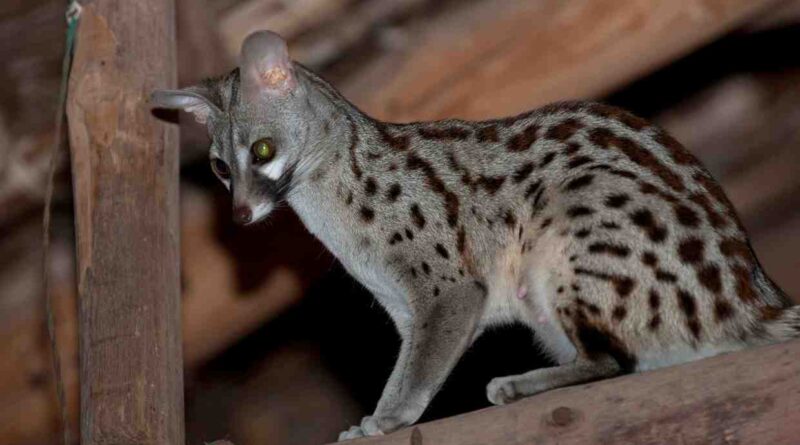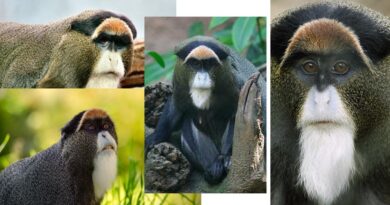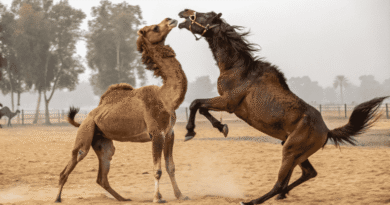GENETS
GENETS, six species related to the civets and mongooses. The best-known is the Feline, or small-spotted genet, Genetta genetta, of Africa, also found in Spain and southern France. It is cat-like but more slender, elegant, and graceful in movement, up to 40 inches (1 m) in length, of which nearly half is tail. Its fur is soft and spotted with brown to black on a light ground color. The head is slender and tapers to a pointed muzzle with long whiskers, and the ears are large. The tail has alternate black and white rings, while along the spine is a crest of long black hairs that is raised in moments of excitement. The legs are short, with small paws and retractile claws.
The Blotched or Tigrine genet, G. tigrina, numerous throughout Africa, is similar to the Feline genet but has larger spots on a more yellowish ground color, and the crest is missing. The rusty-spotted genet G. rubiginosa, found south of Tanzania, is like the blotched genet except for its more reddish spots. The rare Abyssinian genet G. abyssinica of the highlands of Ethiopia is the smallest of the genets, not more than 20 inches (51 cm) in total length. It has ash-colored fur broken by longitudinal black stripes. The Victorian gene G. victoriae and the water gene Osbornictis piscivora are known only from skins brought back by pygmy hunters in the Ituri Forest of the Congo.
Feline genets live in areas of bush and low scrub. They are usually solitary, hunting by night and sleeping by day among the branches. They stalk their prey, gliding swiftly over the ground with the tail held straight out behind them, finally seizing their prey with a swift pounce.
Genets feed on small rodents, birds, and insects, particularly night-flying moths and
beetles. A certain amount of grass is also regularly eaten. Family: Viverridae; Order: Carnivora; Class: Mammalia.



